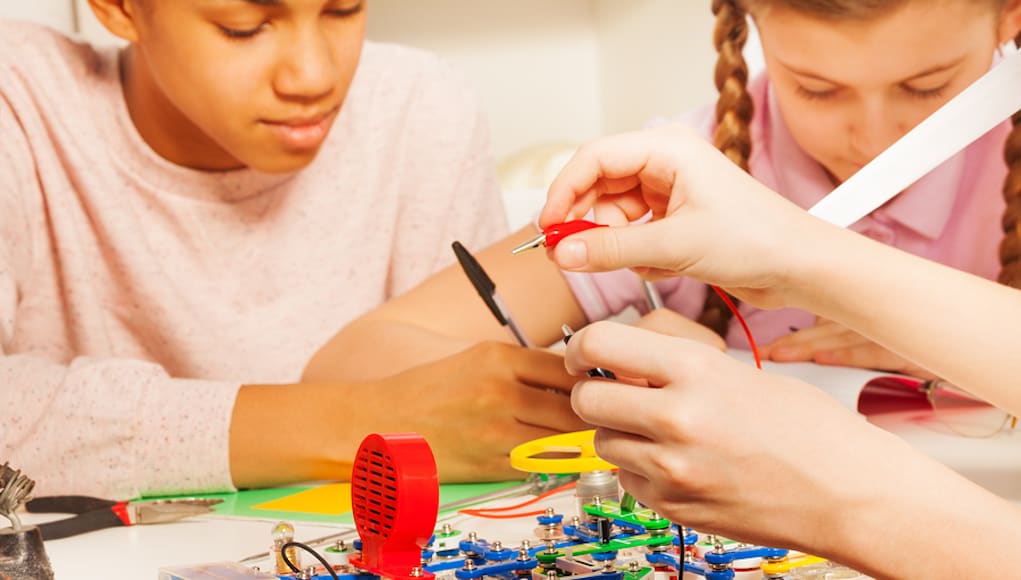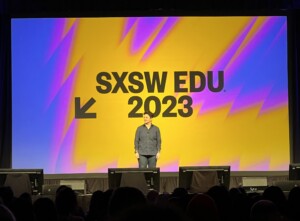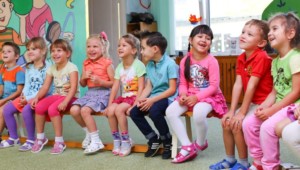Educating the Whole Child Through PBL

Project-based learning has been touted as the pedagogical cure-all for many things. Indeed, I have long argued it’s the ultimate instructional response to the need for real-world relevance and application, problem-solving, collaboration, student engagement, presentation skills, mentors and even tech integration. It’s the pedagogical glue if you will.
But one area that is maybe not mentioned as often is its connection to social-emotional learning. Indeed, PBL may not just be the best academic answer, but also the best cultural answer. Project-based learning, while it’s diverse and experiences can vary, allows students multiple opportunities to engage with others, as well as themselves, in new and more personalized ways. By contributing to something larger than themselves, i.e. a real-world project, they begin to see themselves as contributors and advocates who have self-worth, a voice and a real role in the world at large.
Here are just a few areas where PBL can begin to affect the heart, as well as the mind, for every student:
Real World Empathy
One of the many foundational elements of PBL is for students to address or tackle real-world challenges, problems or issues. When students engage in this fashion, they inevitably learn and interact with situations that move beyond their immediate situations, environments, and surroundings. We sometimes think that young people can be self-absorbed (but truly this is a human challenge, not one of youth). But taking on real-world challenges facilities the twist that JFK used to reference. In other words, students begin to stop asking what the world can do for them, but rather ask themselves what can they contribute to the world. This creates a transformation where we can have empathy for others. When we see how the children in Flint, Michigan have been affected by their water situation, we look at these issues – often for the first time and with a new, more powerful lens. We look at how problems affect us—our world, our communities, our school, our peers, our families and ourselves. But this reflective and circular journey creates a deeper understanding and again the path to empathy. I often hear teachers say they value empathy as a trait or skill that they want students to possess. I also often hear from teachers how it’s so difficult for students to have empathy for others. However, I think young people have lots of capacity for the concern of others (empathy) if they embark on real-world project-based learning journeys.
Service Learning and SEL
Many projects—especially those with real-world challenges or issues embedded as part of the project—also have opportunities for service learning. Because the students are tackling these real-world challenges, there are real-world efforts in their communities to address these challenges that our students can connect with that result in service opportunities. In many cases, if not almost all, there are also partner organizations—on local, regional, national and even international levels—that will partner with our students, teachers, and schools to assist them in their project-based learning efforts. In turn, our students are helping these organizations support their volunteer and organizational needs. When students ultimately see their work not only utilized by others, but making a difference, they begin to not only be more engaged, but more empowered. By seeing their work as being a successful part of some larger work, there is a natural connection to SEL. They begin to realize their individual and potentially powerful place in the world—their school community, local community, and the global community. They begin to see and experience that learning can be powerful, relevant and action-oriented. Additionally, they are gaining valuable real-world skills, portfolio and resume exemplars, expanded professional and personal networks and the natural benefits of increased endorphins.
PBL is People-Oriented
We use the word collaboration continually. But rarely do we explicitly call out how collaboration is supposed to look and why it’s so important. It’s not just a good idea, it’s a career skill—maybe one of the most in the new and emerging economies. PBL not only allows for real-world collaboration—it fosters it. Students engaged in relevant, real-world project work have opportunities to work with experts, industry professionals, school and community leaders, non-profit organizations, clients or constituents, and their peers. All of this allows, in real time, for students to see the true power of connection, relationships and real collaboration. They don’t just hear about collaboration—they see it in action. Each of the different partners that our students work with through their projects has the potential to become that mentor, supporter, role model or employer. This concept of a PLN (professional or personal learning network) is not something that magically occurs as professionals, but rather is a product of a collaborative skill set that requires development. If students don’t get these skills now, facilitated by their schools through projects, when will they? We can’t leverage relationships for opportunities unless we have had authentic ways to develop them. When it’s time to be hired, apply for that internship or get that scholarship, our students have to have their PBL PLN’s ready for deployment. And they will only be able to if they have a PLN and these contacts know of their work.
Sense of Self
For years, we have oft referred to Maslow’s Hierarchy of Needs as way to explain how we can get students to become self-actualized. If students can get basic needs met (safety, food, clothing), have love and belonging (relationships) and esteem (accomplishment, recognition, mastery, independence), they can become self-actualized (personal best, potential). Well, as usual, how do we do this? As I advocated earlier, PBL provides a pedagogical approach that can produce the environment, situation, opportunities culture that fosters a sense of self. Everything about PBL—real-world challenges, collaboration, student voices and roles, authentic and public work and reflection—creates opportunities for students to self-actualize. They have multiple chances to meet their road to self-actualization. When they present their work publicly, they have an opportunity for that sense of esteem. When they get to choose how to present their work, what areas of study to focus on and even whom to collaborate with, they can enjoy mastery and independence. When they get a chance to serve in certain roles, while using and advancing various areas of strength, they can enjoy recognition, accomplishment and that necessary sense of belonging.
Reflective Practices and Personal, Emotional Growth
One of the tenets of PBL is reflection. We do this in order to show students that learning operates at high levels when we think about the learning. We think about, as well as articulate, what we learn, how we learn, what has changed now that we’ve experienced the learning and what we take with us to our next challenge. SEL is predicated on the idea that we are able to identify our own personal and emotional growth. The five core components of SEL—self-management, self-awareness, decision-making, relationship skills, and social awareness—are naturally strengthened when identified and reflected upon. PBL perpetuates metacognitive opportunities, experiences, and practices—which in turn perpetuates a deeper understanding of own growth. These opportunities are natural elements when presenting public work, addressing real-world challenges to authentic audiences.
The Final Pitch
It seems that teaching the whole student might be more important than ever. Whether it’s the skills for a new and more globalized economy, improved health and wellness, developing and optimizing a growth mindset, self-actualization, better relationships and collaboration, achieving personal and professional goals or contributing to and being part of better communities, we cannot afford to approach learning, and students, through narrow academic and content standards lenses. Indeed, our approach to the whole student will greatly influence the success we have on any part of the student. PBL not only allows for this—it facilitates it.
For more, see:
- Extending Social Emotional Learning into the Home
- 6 Ways to Inject Creativity Into PBL
- Getting Classroom Culture Right with Practical SEL
Stay in-the-know with all things edtech and innovations in learning by signing up to receive our weekly newsletter, Smart Update.






Fekara @ School Management Software
Great article, I think it was very useful for students, that parents and teachers share relevant information with each other about a student.